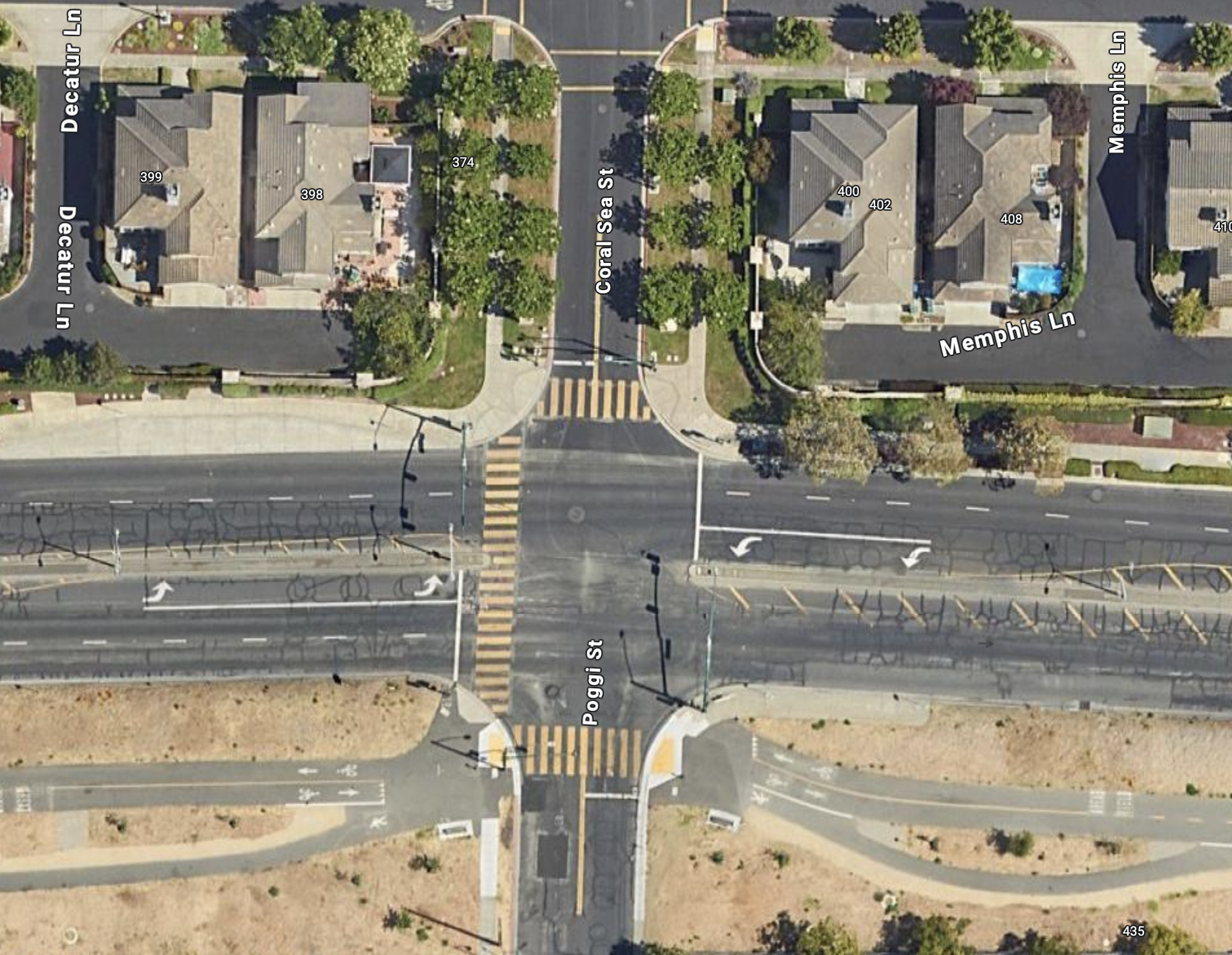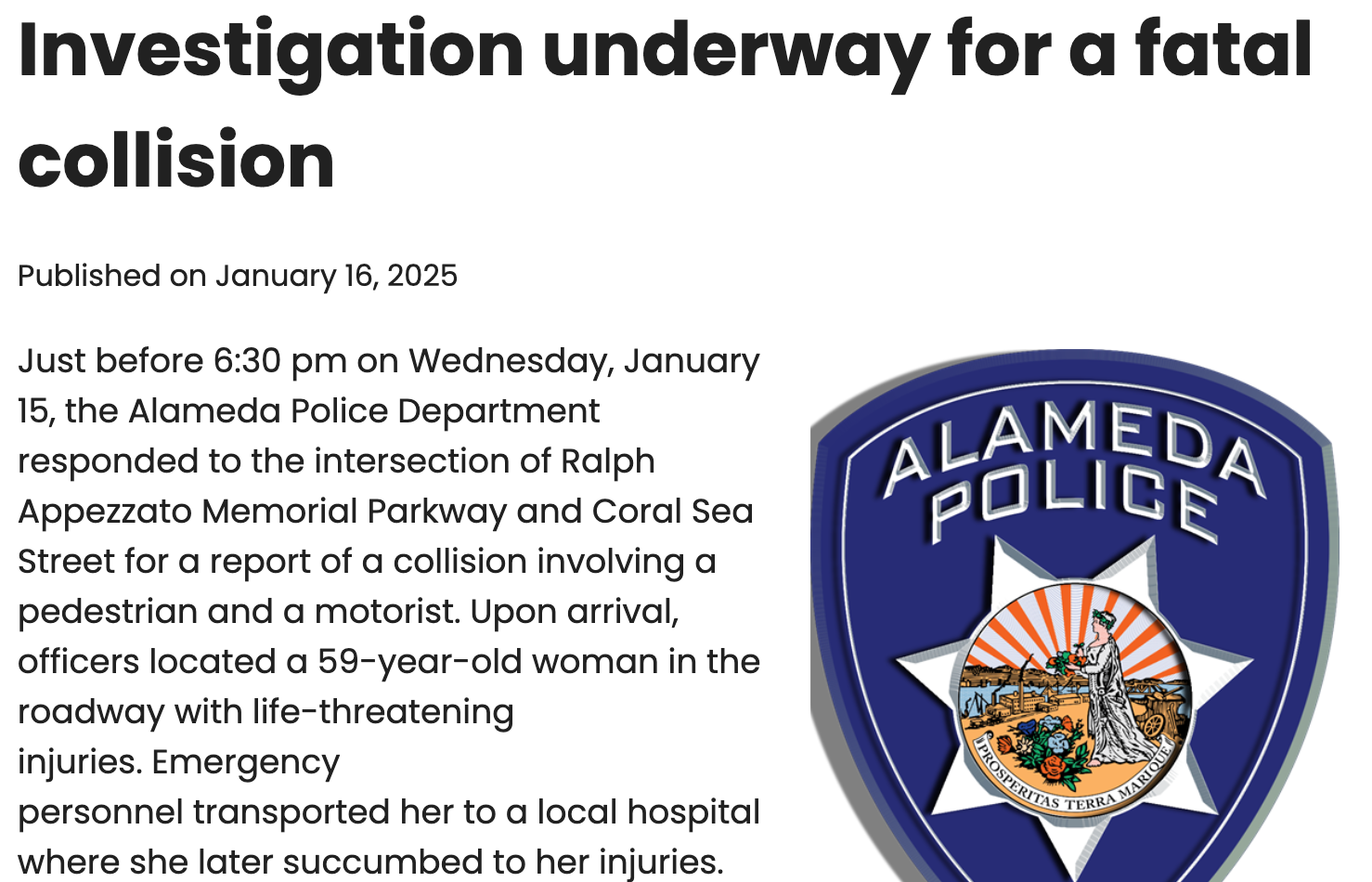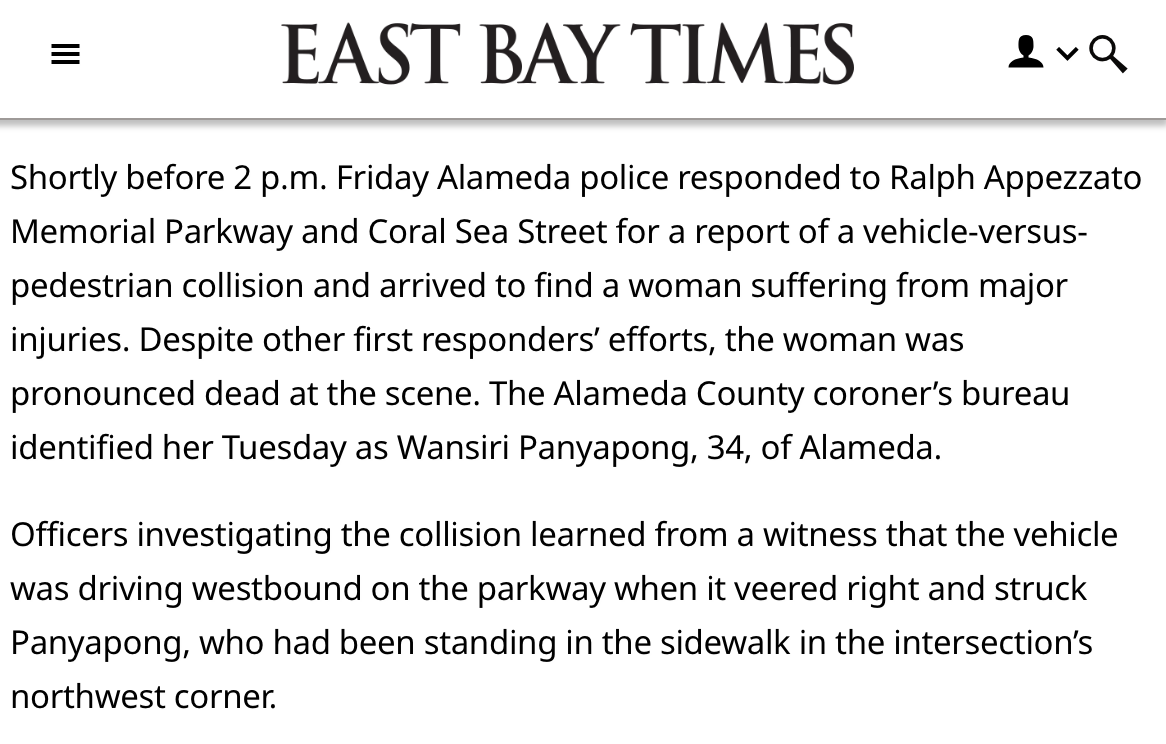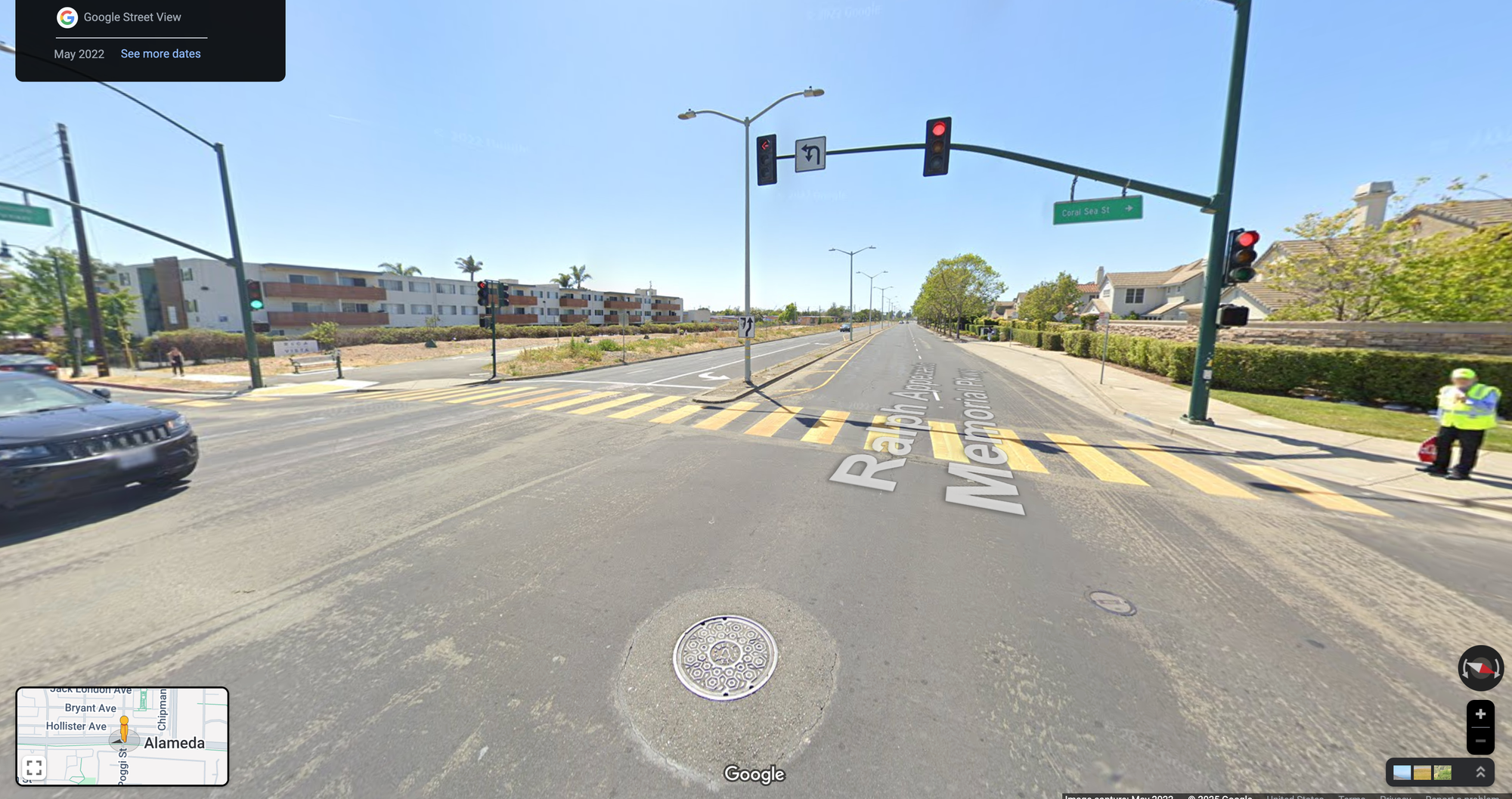This Wednesday evening, a driver killed a woman who lives in Alameda while she was walking across Ralph Appezzato Memorial Parkway (RAMP).
The city's press release includes a few details about this, Alameda's first traffic fatality of the year. The cross street: Coral Sea Street (and Poggi St). The time: 6:30 p.m. on an otherwise normal evening (so dark but hardly late). The likely behavior of the motorist at the time: turning through the intersection to go westbound on RAMP (toward Alameda Point).

But what's left out are details that don't make it into press releases. Who was this unfortunate person? How did this happen? And how can we prevent this from happening again?
It's not my place to speculate or to get ahead of staff's investigation into this specific crash and its specific conditions (or to get ahead of family and friends dealing with this horrible situation).
However, I think it is my place — and the broader public's place — to be upset that a person on foot was just killed in practically the same spot as another pedestrian 5 years ago:


Left: 2025 City of Alameda press release Right: 2020 East Bay Times article
That 2020 crash was perhaps too easy to mentally shrug off. The driver was under the influence of what sounds like a nasty combination of alcohol and drugs. One could say it was just a bad person who did a bad thing. But: now the same bad thing has happened again — more or less — just with different actors.
We shouldn't shrug it off then and we shouldn't shrug it off now. The point of a Vision Zero program is to take systematic and and ongoing efforts to have zero deaths and zero serious life-altering injuries on Alameda's streets.
In the meantime since 2020, the City of Alameda has established a "Rapid Response after Fatal Crashes Program." This will provide city staff with an impetus to make meaningful changes to the design of RAMP this time.

At the risk of speculating in advance of the full investigation, let me offer two high-level thoughts to guide the city's response:
- Paint, plastic, and wishes don't protect people from speeding cars — concrete does. This is a point I've been reiterating at Transportation Commission meetings any time that the Rapid Response program comes up. If the goal of this program is to deploy prompt improvements to address significant safety issues at specific intersections or on specific street segments, then the materials need to be physically up to the task. ("Quick build" paint and plastic are certainly useful to have in the city's broader toolkit — but for the Rapid Response after Fatal Crashes Program, the materials probably should be harder.)
- Should pedestrian crossing distance at this intersection be reduced?
- Should pedestrians get a "refuge" island in the middle of the crosswalk?
- Should RAMP be reduced to one lane of thru auto traffic (both to decrease straight-away speeding and to decrease wide turning into multiple receiving lanes)?
- Should sidewalks located flush against an auto travel lane be protected from passing cars with more than just ~6 inches of curb?
If city staff and consultants think so based on their investigation, then figure out how to quickly implement some or all of those changes in appropriate materials.
- Alameda needs to do better for the West End — and to enable this, those of us on the East End need to stop hogging more than our fair share of the city's time and resources. Grand Street ate up an uncountable amount of the city's time and oxygen — and it's still not started (as pointed out by the SF Chronicle reporter assigned to report on this recent pedestrian fatality.) Currently Fernside Boulevard is getting attention for two phases strategically paced over many years. This next Transportation Commission meeting will also discuss upcoming paving projects across Bay Farm Island (including "complete street" improvements to Aughinbaugh Way and Mecartney Road.) All of those are worthwhile projects that should happen. But let's also be frank: the western side of Alameda just doesn't seem to get the attention that other parts of Alameda receive.
Whenever this blog has suggested that the city hire more staff to handle more infrastructure improvements in parallel, both electeds and staff have said that's not going to happen. So instead this blog will have to suggest this: do less for people like me — that is, people who live in the wealthiest eastern parts of Alameda and have the ears of city leaders.
Take those concrete barriers recently installed to protect a decorative wrought iron fence in front of Lincoln Park on the East End of Alameda, and move those barriers — along with the associated staff attention — to the West End. Let's not let problems like the dangerous design of Ralph Appezzato Memorial Parkway linger for the people who live around there, may cross it regularly to go to school or to stores or to walk their dog, and are stuck lower on the city's list for attention.
Please get ready to email them when the Fernside Boulevard Traffic Calming and Bikeways Project reaches City Council in the next couple months.
If this pedestrian fatality upsets you, you could also consider writing them — as well as the entire City Council — at this time as well.
Let's give our condolences to the family and friends of this person — and ask more of our city.